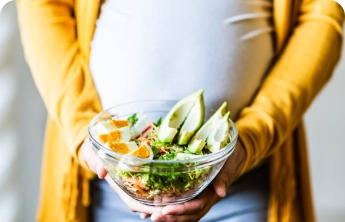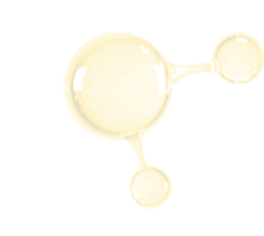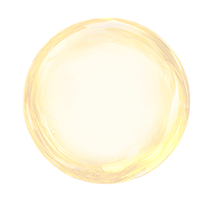Weeks 41-42:
At 10 months old, babies still can't speak—even when sick or having a fever, they can only seek help through crying. Medically, fever indicates the body is under viral attack, with the immune system activated. Rising body temperature kills certain pathogens and accelerates white blood cell production. Upon noticing fever signs, parents should monitor temperature frequently, seek medical advice to identify the cause, and administer targeted treatment. For parenting questions, contact Yili Aier Club's Facebook/Whatsapp online customer service.
How to Properly Care for a Feverish Baby:
- If the baby's temperature is below 38.5°C:
Use physical cooling methods:- Drink warm water, vegetable soup, and fresh fruit juice to replenish fluids—effective for all feverish babies.
- Warm water bath: Use 32°C-34°C water to wipe the skin, avoiding chest and abdomen (sensitive to cold). Skip if the baby has a rash.
- If the baby's temperature is above 38.5°C:
Use baby-specific antipyretics as advised by a doctor, following dosage instructions strictly. Ensure adequate fluid intake to facilitate heat dissipation.
Weeks 43-44:
Nearing 11 months, babies develop stronger self-awareness, often showing picky eating. Parents needn't worry—this is a normal phase, but severe偏食 (food偏食) can cause nutritional imbalance, affecting growth and leading to anemia, rickets, low immunity, hyperactivity, or irritability. Establish good eating habits: gradually introduce complementary foods after 6 months, and ensure focused mealtimes for balanced nutrition.
How to Address Picky Eating:
- Guide rather than force
Avoid coercive feeding or bribing. Introduce new foods by pairing them with favorites or shaping them into fun forms (e.g., dinosaur shapes). - Improve cooking methods and use appealing tableware
Prepare精致 (delicate) meals and serve them in cute children's tableware to enhance appetite. - Create a positive dining environment
Keep mealtimes quiet and relaxed. Avoid using phones, TV, or toys, and establish regular mealtimes with the family—no chasing to feed. - Praise and set a good example
Encourage babies when they try new foods. Parents should avoid showing food preferences to prevent imitation.
Weeks 45-46:
At 11 months, babies still have fragile digestive systems, prone to 积食 (food accumulation). Caused by overfeeding or hard-to-digest foods, it leads to digestive stagnation, shown by restlessness, teeth grinding, loss of appetite, greenish鼻梁 (nasal bridge), white/heavy舌苔 (tongue coating), and bad breath. Choose formula with OPO and probiotics to ease digestion.
How to Handle Food Accumulation:
- Home care
Gently massage the abdomen in a circular motion with fingertips or the palm root to promote peristalsis. - Dietary adjustment
Eat smaller portions of light foods like vegetables, congee, and noodles. Limit fried/processed foods and meat; consume hawthorn (in moderation) for digestion. - Medical treatment for severe cases
Consult a doctor if symptoms persist, accompanied by fever, cough, or constipation. Use medications as advised:- Dry stools: Fu'er Wan, Qingzhi San
- Internal heat (red lips, restlessness): Houzao San, Baobao Qingre Ling
- Cough: Baobao Xiaoji Zhike Oral Liquid
- Vomiting: Huoxiang Zhengqi Wan
- Prevention
Maintain regular meals with more veggies and less meat. Avoid feeding within 1 hour of waking. Breastfeeding mothers should eat lightly to prevent "milk accumulation."
Weeks 47-48:
Nearing 1 year old, many mothers plan to return to work, making breastfeeding difficult. With successful complementary feeding, babies rely less on breast milk—this is a common weaning period. If the baby resists weaning or shows poor digestion, remember: weaning is natural when done correctly. During weaning, continue complementary foods and choose OPO-formula milk to replace breast milk for comprehensive nutrition.
How to Properly Wean Your Baby:
- Treat weaning as a natural process
Encourage interest in non-milk foods by gradually introducing new tastes, following the principle of "from less to more, from thin to thick." - Ensure the baby is healthy
Conduct a full physical exam before weaning to ensure good health and normal digestion. - Gradually reduce breastfeeding sessions
Start by cutting morning feeds, then night feeds, while increasing the variety and quantity of complementary foods. - Avoid weaning during illness
Postpone weaning if the baby is sick, teething, or experiencing major life changes (e.g., moving, new caregiver). - Be decisive, not indecisive
Stay firm during weaning—don't delay due to crying, but provide emotional support. - Don't avoid the baby
Offer more care and physical comfort. Increase father-child interaction to reduce maternal dependency gradually.

 En
En Member Login
Member Login Contact
Contact







